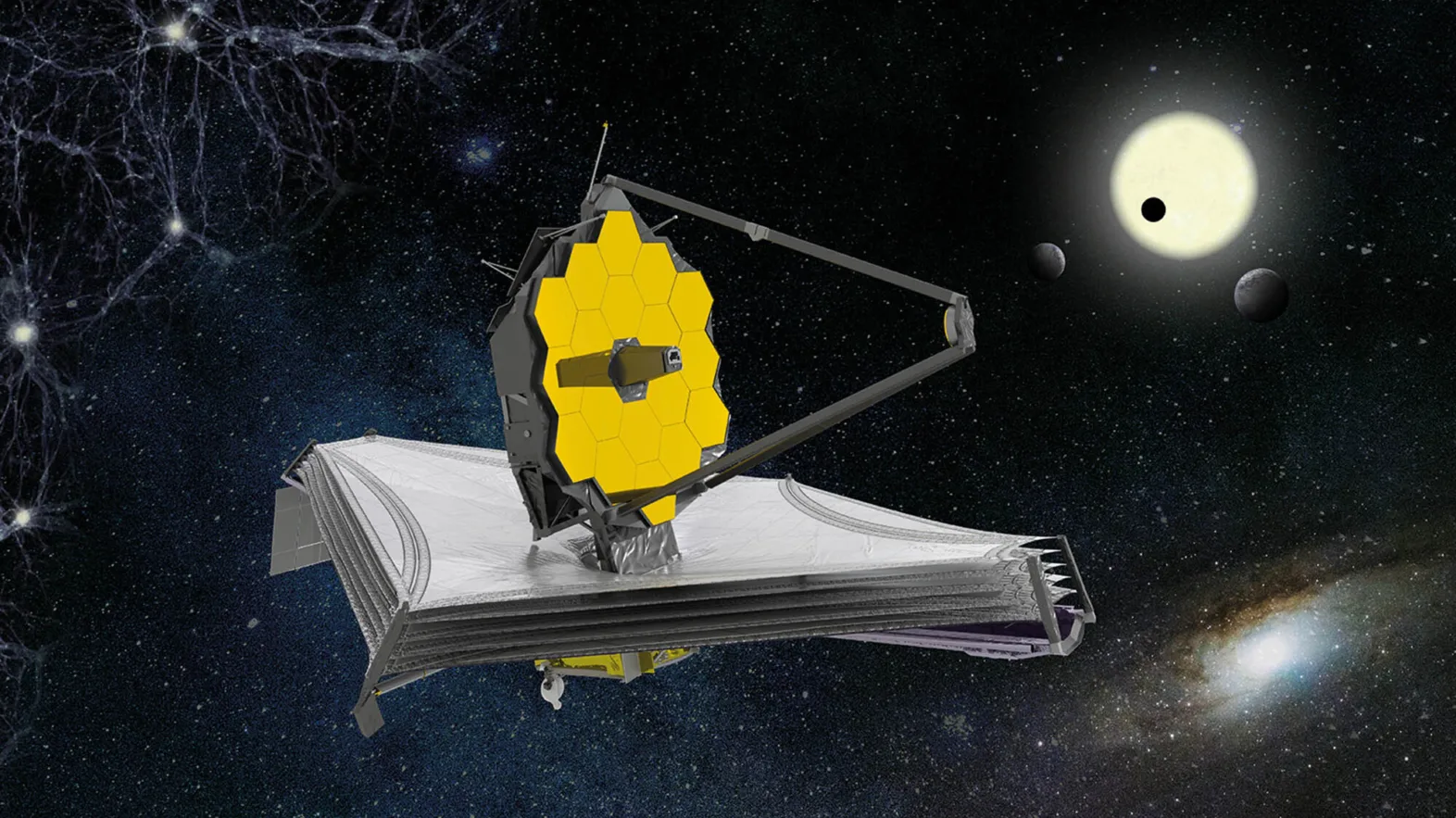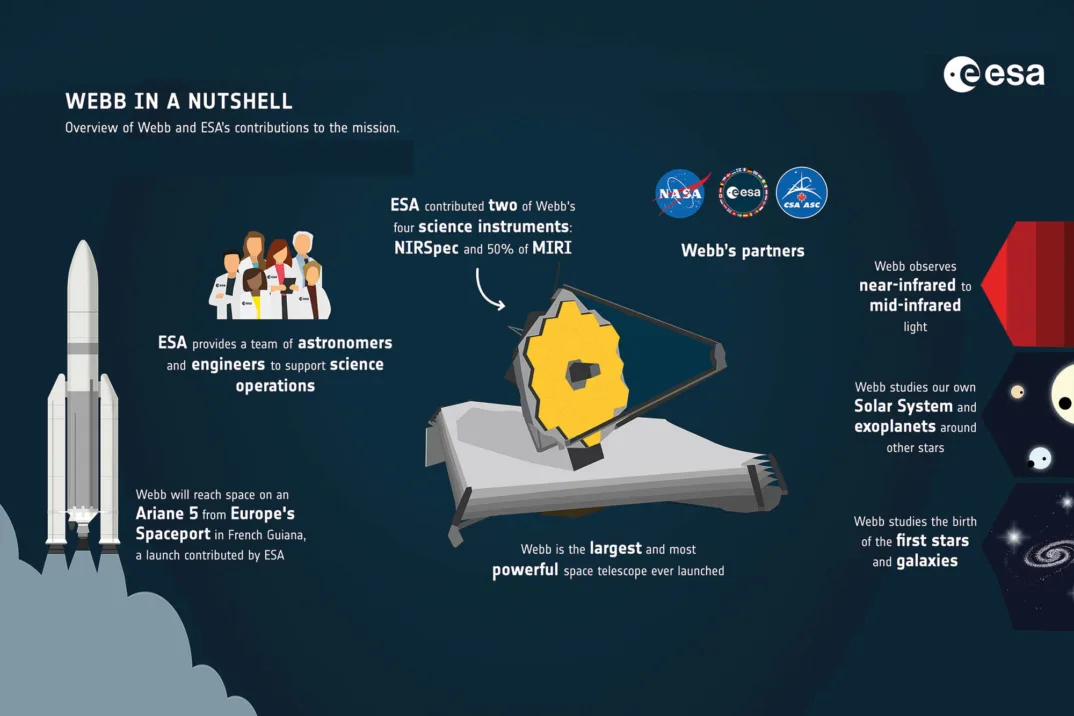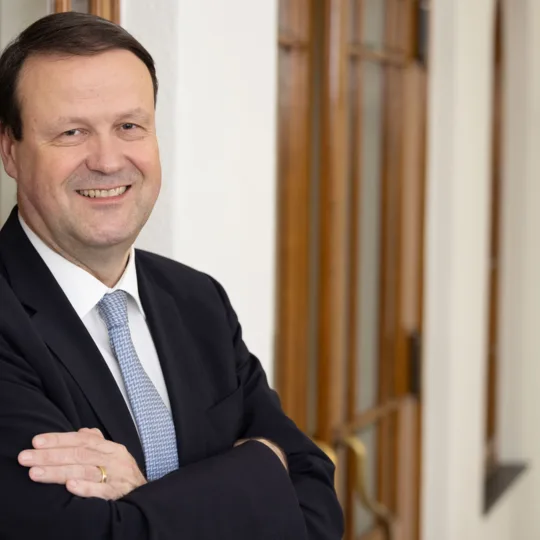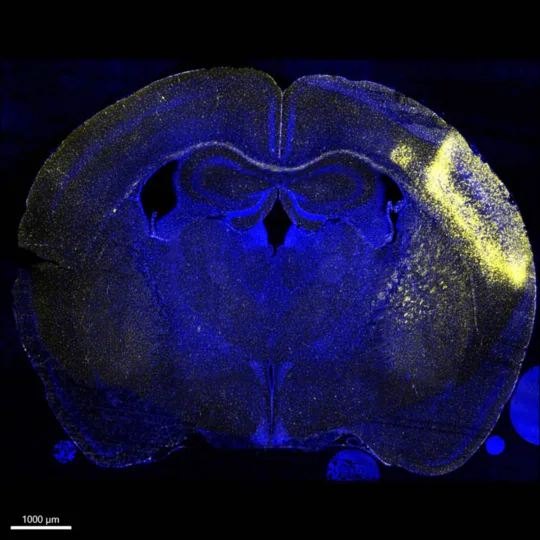James Webb Space Telescope launch
The James Webb Space Telescope (Webb) is the most powerful telescope ever built. It is the product of an international partnership between NASA (National Aeronautics and Space Administration), the European Space Agency (ESA) and the Canadian Space Agency (CSA).

Viewed as a successor to the Hubble telescope ‒ which has been in operation for over 30 years now ‒ Webb's field of view will be about 15 times larger. Its mirror will reflect light back to four highly sophisticated scientific instruments in order to study how the first galaxies and stars formed and evolved. The telescope will observe the furthest reaches of the universe from its orbit around the Sun at about 1.5 million kilometres from Earth, or four times the distance from Earth to the Moon.
Sunshield the size of a tennis court
Webb’s main mirror, which consists of 18 individually adjustable hexagonal sections, has a diameter of 6.5 metres – making Webb the largest space telescope ever built. It will also have a sunshield the size of a tennis court to protect it from the heat of the sun. There will be four scientific instruments on board: MIRI (Mid-Infrared Instrument, NASA/ESA), NIRCam (Near-Infrared Camera, NASA), FGS/NIRISS (Fine Guidance Sensor and Near-Infrared Imager and Slitless Spectrograph, CSA) and NIRSpec (Near-Infrared Spectrograph, ESA). Large ground-based radio antennas will receive the signals from the telescope's transmitter and relay them to the Mission Operations Centre at the Space Telescope Science Institute in Baltimore, USA.

European and Swiss contributions
ESA is contributing to two of Webb's four scientific instruments (NIRSpec and MIRI) and its launch, as well as providing personnel to support mission operations. Announcing the expected launch date, ESA expressed pride in the fact that Webb will be launched from the Guiana Space Centre in Kourou, also known as Europe's Spaceport, on an Ariane 5 rocket specially adapted for this mission. Because of its vast size, Webb needs to be folded down like origami so that it fits into the Ariane 5 launcher. RUAG Space designed the housing that will protect Webb during launch, which it produced in Emmen (LU) and shipped to Kourou in August 2021.
The ETH Zurich Institute for Particle Physics and Astrophysics is a member of the Webb Mid-Infrared Instrument (MIRI) Consortium. The Consortium's main partners are a nationally funded European Consortium (EC) under the auspices of ESA, together with NASA's Jet Propulsion Laboratory (JPL) and Goddard Space Flight Centre (GSFC). The EC is responsible for the optics and optical bench, and the assembly, integration and testing of the MIRI instrument. MIRI is the only one of Webb's instruments that covers the little-explored wavelength ranges from 5μm to 28μm (near- to mid-infrared). It has the capabilities necessary to support all of Webb's research activities, which cover every phase of cosmic history from the high-redshift universe to our own solar system to the formation of planetary systems. Combined with Webb's unprecedented sensitivity, this wavelength range will launch the beginning of a new era in astrophysics research.
Dr Alexander Zehnder from the Paul Scherrer Institute (PSI) originally led the Swiss contribution before it moved to ETH Zurich in 2008. Since 2007, Dr Adrian Glauser has headed the Swiss national project participating in the MIRI consortium for Webb, and has supervised the involvement of Swiss industrial partners RUAG Space and SYDERAL SA.
The role of Swiss industry
In addition to the housing protecting the telescope while it is on the launcher, RUAG has developed the contamination control cover to protect MIRI from external contamination during its cool-down phase in testing and following launch. This mechanism also acts as an optical shutter for MIRI, allowing for on-board calibration and the protection of Webb’s sensors.
SYDERAL SA developed special cables known as cryo-cables, which consist of 250 electrical wires that connect the cryogenic mechanisms, calibration sources and temperature sensors of the cold optical bench to the 'warm' electronics.
Scientific studies of unprecedented precision
The Hubble telescope revolutionised astronomy, and soon observations from the James Webb telescope could allow scientists to look even further back into the history of the universe, perhaps as little as 300 million years after the Big Bang. With its unique capabilities, Webb is a key mission among ESA’s fleet of space science missions to unlock the secrets of the universe. Its discoveries will complement those of ESA’s current and upcoming exoplanet missions, Cheops, Plato, and Ariel. Webb will also follow up on detections from Euclid, the ESA space telescope set to launch one year later on a mission to understand the fabric of our cosmos. Furthermore, Webb’s discoveries will help set the stage for ESA’s future X-ray mission Athena and gravitational wave detector LISA.
Eagerly awaited around the world, the Webb launch will be the crowning achievement for thousands of people who have been working on this project for so many years and will provide unique opportunities for the scientific world.
Contact
Author



